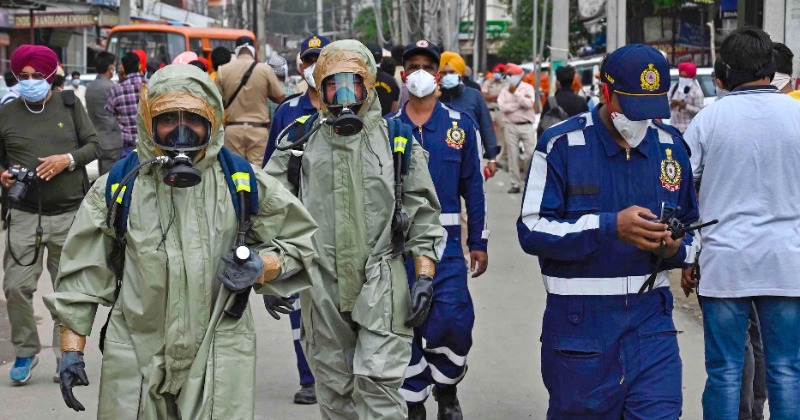The National Green Tribunal (NGT) has set up an eight-member committee to investigate the gas leak case in Ludhiana, Punjab. The NGT took suo motu cognisance of the matter based on media reports.
A gas leak in the Giaspur area of Ludhiana has killed 11 people due to inhalation poisoning. The cause of the leak is suspected to be a partially open manhole that released a neurotoxic gas, possibly Hydrogen Sulphide. An inquiry is ongoing, and forensic experts suspect that acidic waste may have been thrown into the sewer, causing a reaction with other sewerage gases to produce the poisonous gas.
The National Green Tribunal (NGT) is a statutory body established under the National Green Tribunal Act, 2010 to efficiently handle cases related to environmental protection and the conservation of natural resources.

AP
Jump To
![]()
What are Neurotoxins gases?
Neurotoxins are poisonous substances that can harm the nervous system by disrupting or killing nerve cells or neurons. These cells play a vital role in transmitting and processing signals in the brain and other parts of the nervous system.
Some of the neurotoxic gases are methane, hydrogen sulphide, carbon monoxide, and carbon dioxide. Hydrogen sulphide is particularly dangerous and has a pungent odour that can be fatal even in small concentrations.
One breath of hydrogen sulphide can be lethal for humans. Methane and carbon monoxide are odourless gases that can also be harmful.
Safeguards Against Chemical Disasters in India
In India, the safeguards against chemical disasters were initially provided by the IPC 1860, but after the Bhopal Gas tragedy, the government introduced new laws to regulate the environment and establish safeguards and penalties.

AFP
One such law is the Bhopal Gas Leak (Processing of Claims) Act of 1985, which empowers the central government to handle claims related to the tragedy in a fair and prompt manner.
The central government in India is authorized by the Environment Protection Act (EPA) of 1986 to take measures to improve the environment, set standards, and inspect industrial units.
And, the Public Liability Insurance Act of 1991 provides insurance coverage to individuals affected by accidents that occur while handling hazardous substances.
Meanwhile, the Hazardous Waste (Management Handling and Transboundary Movement) Rules of 1989 require industries to identify and prevent major accident hazards, as well as report to designated authorities.
Further, the Manufacture, Storage and Import of Hazardous Chemicals Rules of 1989 mandate importers to provide full product safety information to the competent authority and transport chemicals in compliance with the revised regulations.

AFP
The Chemical Accidents (Emergency, Planning, Preparedness and Response) Rules of 1996 require the central government to establish a central crisis group responsible for managing chemical accidents and implementing a crisis alert system for rapid response. Additionally, each state must create a crisis group and report on its activities.
In accordance with the National Environment Appellate Authority Act of 1997, the National Environment Appellate Authority has the power to consider appeals related to restrictions on areas where certain industries, operations, or processes, or specific types of industries, can be conducted subject to specific safeguards under the EPA1986.


